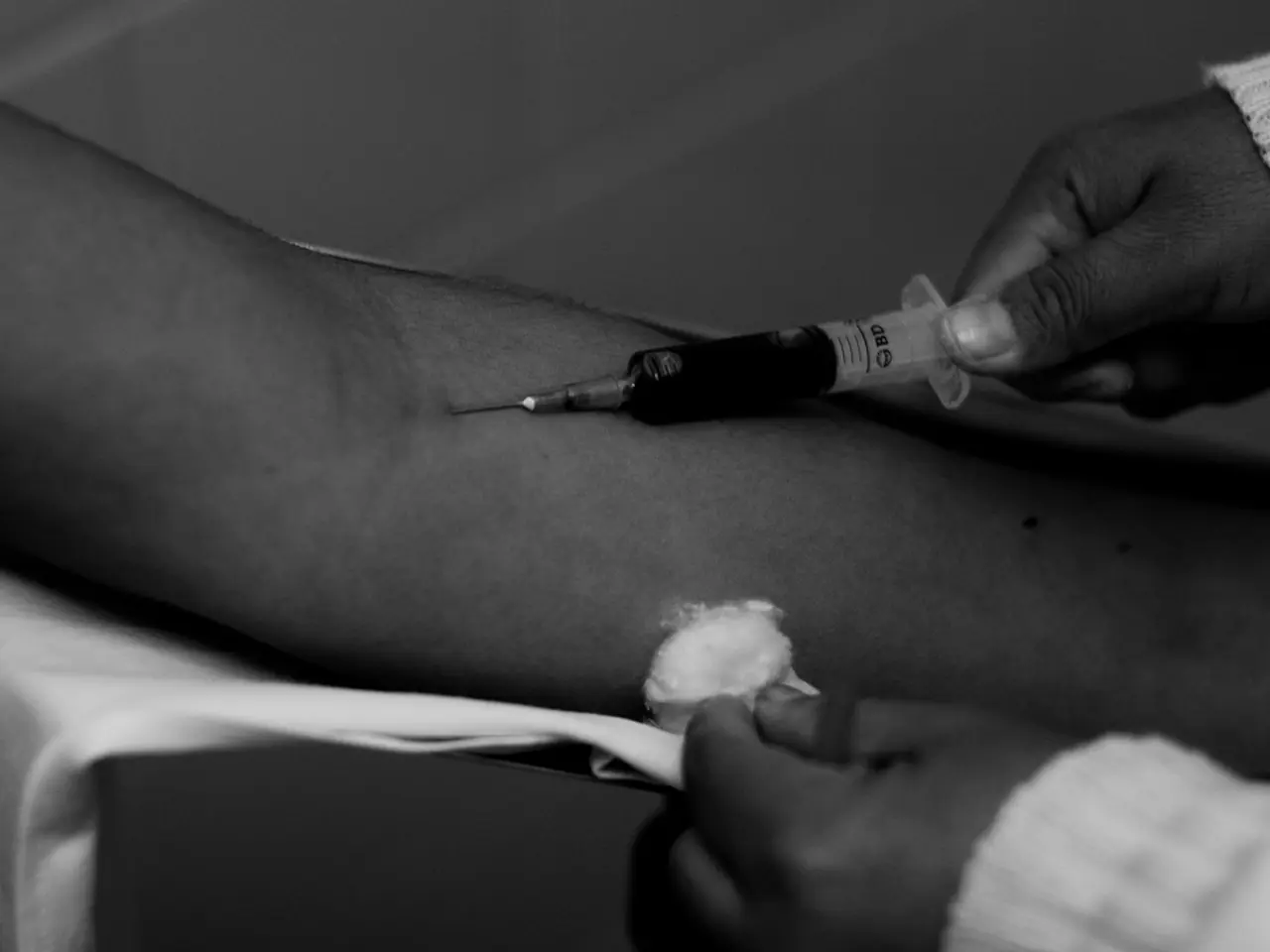Errors Often Encountered Following Cosmetic Injections: A Comprehensive List
The Rosenpark Clinic in Darmstadt, Germany, is a renowned specialist in the field of cosmetic injections. Through its affiliated scientific center, Rosenpark Research GmbH, the clinic conducts clinical studies on the safety and efficacy of these treatments in the realm of aesthetic dermatology and esthetics.
One of the most popular cosmetic treatments is botulinum toxin, often used to smooth wrinkles. According to the American Family Physician, this treatment works by relaxing overactive facial muscles, with results typically appearing in about two weeks and lasting three to four months.
Botox and dermal fillers each follow their own settlement timeline. Botox usually reaches its maximum effect around two weeks, while dermal fillers may take ten to fourteen days to settle fully, sometimes up to four weeks. It's crucial to wait for these treatments to settle fully before considering another session, as jumping in too soon can reduce the treatment's effectiveness and increase risks, as research in Diagnostics highlights.
Patient satisfaction generally improves over time as the product integrates naturally into the skin and people adjust to the results, according to research shown by ScienceDirect. However, over-frequent injections can lead to side effects ranging from minor bruising and swelling to more serious issues like nodules, granulomas, or vascular complications.
Specialists and product manufacturers generally recommend leaving at least a few days to a couple of weeks between treatments, depending on the procedure, to ensure safe and optimal outcomes. The Cleveland Clinic notes that roughly 10% to 50% of patients experience redness, swelling, or pain after cosmetic injections, which may signal potential complications.
When it comes to timing other procedures, research suggests waiting several weeks between Botox and chemical peels to reduce risks. Combining fillers and laser treatments in the same session can speed up filler breakdown, increase inflammation, and make it harder to spot complications early, as experts at the American Society of Plastic Surgeons note.
The Journal of Clinical and Aesthetic Dermatology indicates that patients who use substances like aspirin, ibuprofen, or prescribed anticoagulants within 24 hours of treatment can experience bruising rates that are nearly twice as high as those who abstain. Experts cited by Healthline advise avoiding alcohol for at least 48 hours before procedures and consulting a healthcare professional about pausing certain medications to reduce bleeding risks.
Serious issues, such as vascular occlusion, can appear quickly—sometimes within just 12 to 24 hours following a filler procedure. Acting promptly is essential, as research highlighted by the American Heart Association in the Stroke Journal emphasizes that patients who report early symptoms and seek immediate care often experience much better outcomes than those who wait.
Missing follow-up appointments can leave minor adjustments undone and reduce overall satisfaction with cosmetic treatments, as highlighted by research published in JAMA Network Open. Attending follow-ups with a practitioner after cosmetic injections is key to achieving the best results, according to Clinical, Cosmetic and Investigational Dermatology.
Lastly, it's important to manage expectations. Clinical guidelines note that visible improvements usually take weeks, yet patients often expect immediate changes, creating a common gap between expectations and reality. By understanding the timeline and aftercare requirements of cosmetic injections, patients can make informed decisions and enjoy the benefits of these treatments more fully.








